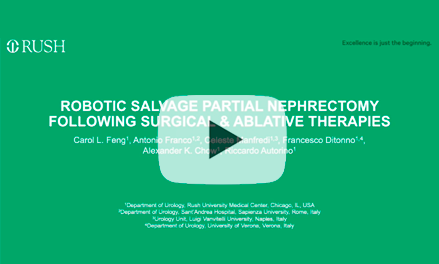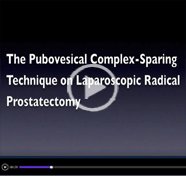Vol. 45 (5): 1071-1072, September – October, 2019
doi: 10.1590/S1677-5538.IBJU.2018.0421
VIDEO SECTION
Fabrício Borges Carrerette 1, 2, Emanuel Carvalho 3, Henrique Machado 3, Felipe Cassau de Sá Freire 3, Ronaldo Damião 4
1 Faculdade de Ciencias Médicas, Universidade do Estado do Rio de Janeiro – UERJ, Rio de Janeiro, RJ, Brasil; 2 Uromedic – Urologia, Petropolis, RJ, Brasil; 3 Departamento de Cirurgia, Universidade do Estado do Rio de Janeiro – UERJ, Rio de Janeiro, RJ, Brasil; 4 Departamento de Urologia, Universidade do Estado do Rio de Janeiro – UERJ, Rio de Janeiro, RJ, Brasil
ABSTRACT
Introduction: Robotic-assisted radical prostatectomy is the leading surgical technique and was discussed in Pasadena Consensus Panel (1). The goal of this study is to present the results of the first fifty-five patients submitted to Anterograde Anatomic Radical Retropubic Prostatectomy technique (R2PA2), without adding complexity or cost.
Materials and Methods: Fifty-five eligible men with localized prostate cancer underwent R2PA2 from January, 2016 to December, 2017. The technique was previously described (2): the main surgical steps were anterograde dissection, ligation of the dorsal vascular complex without dividing, preservation of the bladder neck, nerve sparing, preservation of Denon¬villiers’ fascia and confection of the running suture anastomosis. All patients were operated on by second-year residents.
Results: All procedures were completed as planned, but one converted to retrograde prostatectomy (mean duration, 163.40 minutes; hospital stay, 4 days with 4.20 days of drainage; indwelling vesical catheterization of 9.80 days). Positive surgical margin was found in six T2 staging patient (10.90%) and five T3 (9.10%). Biochemical PSA recurrence occurred in three patients (5.50%).
Twenty-four (43.60%) were continent immediately after indwelling catheter removal, seventeen (30.90%) did not wear a pad at one postoperative month while eighteen (30%) used only one safety pad. Five minor complications occurred.
Conclusion: We were able to perform R2PA2 allowing men who do not have access to this new technology to be oper¬ated on with the same technique used in robotic surgery. This method was reproducible by low-volume prostate cancer surgeons; help inexperienced surgeons to develop skills valuable to future training with robotic techniques.
ACKNOWLEDGEMENTS
This work was supported by the FAPERJ – Fundação Carlos Chagas Filho de Amparo à Pesquisa do Estado do Rio de Ja¬neiro. Secretaria de Estado de Ciência, Tecnologia e Inovação do Governo do Estado do Rio de Janeiro, Brazil, and Pedro Ernesto University Hospital of the State University of Rio de Janeiro, Brazil.
ARTICLE INFO
Available at: https://intbrazjurol.com.br/video-section/20180421_Carrerette_et_al




